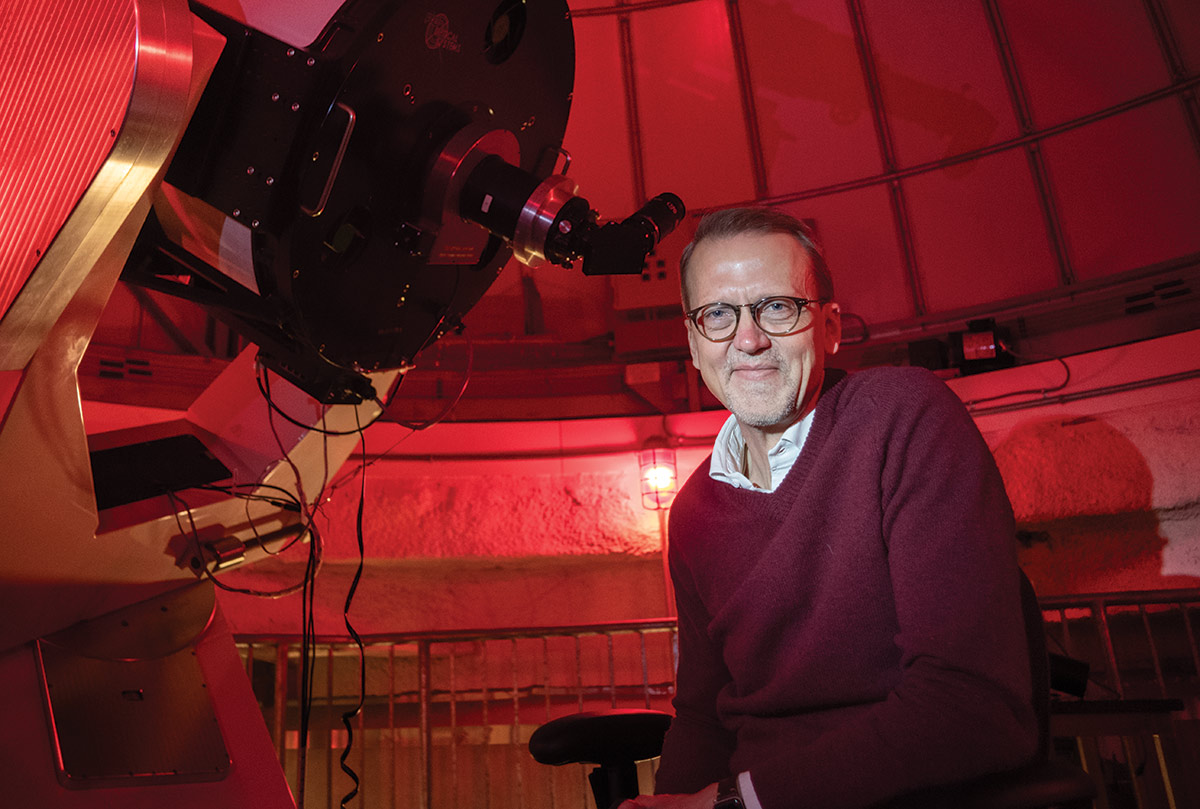
A WIDENING SCOPE
What about your new role appealed to you?
I thought it would be fun to take on some new challenges. Working with faculty to make sure they have the resources to support students, to think about our policies and whether there are areas where we can improve, has been exciting.
What does your most recent work with NASA entail?
I’ve received two grants recently related to a small NASA mission, the Transiting Exoplanet Survey Satellite. It’s surveying the whole sky and searching for planets around other stars. I’m part of a big team connected with that mission and especially follow-up observations here on the ground. We have a network of telescopes around the world. I help coordinate observations to confirm discoveries from the satellite. I’ve written software that takes our list of candidate stars that may have planets and sends commands to the individual automated telescopes. Some of it is done by humans and some by friendly robots we’re sending commands to that run those telescopes.
How did your involvement in the Environmental Studies Program and teaching climate change come about?
We don’t have an atmospheric sciences department like a big university might, or a geology department. But there was grant funding available to get [Tri-College Consortium] faculty together to brainstorm how climate change might fit into our curricula. That helped lead to [Morris L. Clothier Professor Emeritus of Physics] Peter Collings morphing a geology class he had taught for years into more of a climate change class. When he retired, I took over that class, which expanded to consider the political, economic, and ethical factors of climate change, and possible solutions. It’s a great liberal arts, interdisciplinary problem to which students bring varied perspectives.
What should people know about the solar eclipse on April 8?
In the Philadelphia area, we’ll see about 90% of the sun blocked. It will be noticeable, but it’s not quite the same as seeing a total solar eclipse, which happens over a relatively narrow path. The path of totality will cut through Ohio and Northwest Pennsylvania and then up through New England. The best chance of seeing totality is to go to Mexico or southwest Texas. The cool thing about seeing a total eclipse is it’s just this dramatic view. Suddenly the sun has gone down; the birds, confused about what time of day it is, start singing; and it gets cooler because the sun is blocked out. You can see some of the faint outer layers, wispy hot gas around the sun, what’s called the corona of the sun. It’s a really neat experience. It’s well worth traveling a little to try to see the total eclipse.